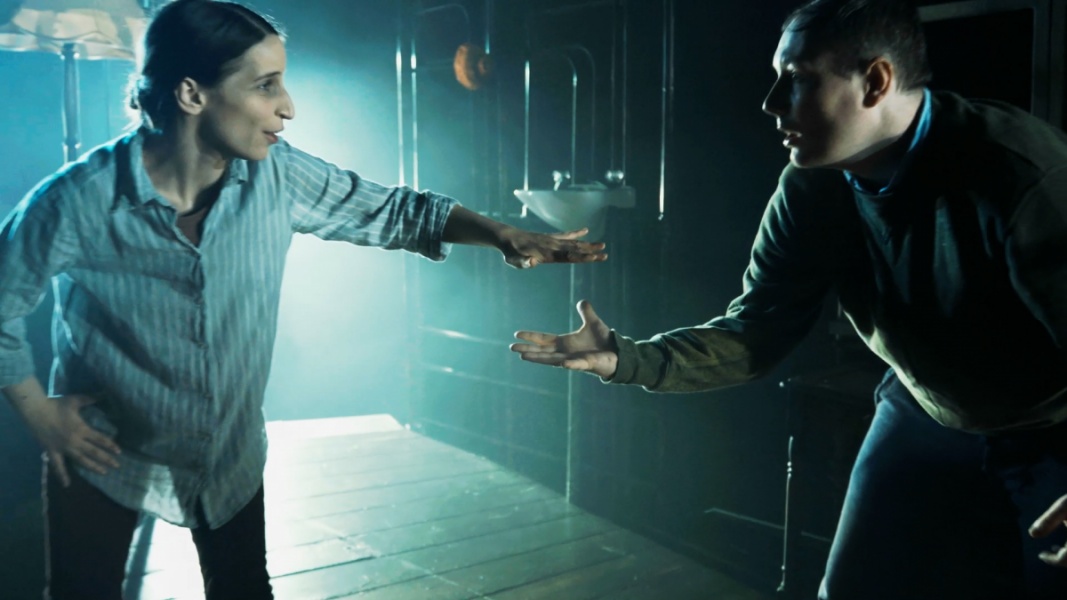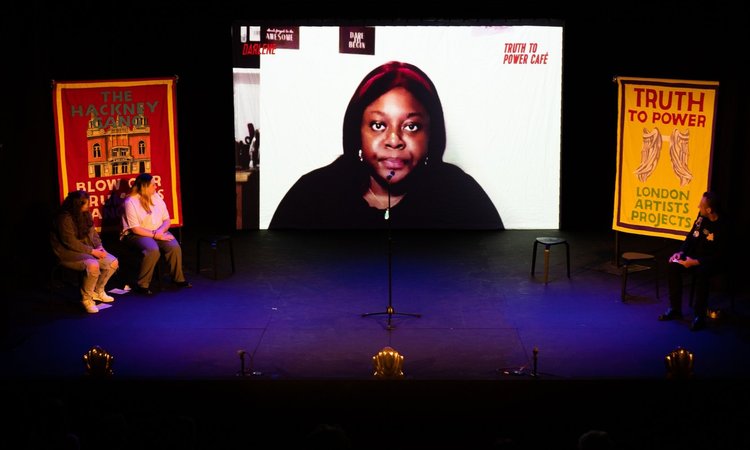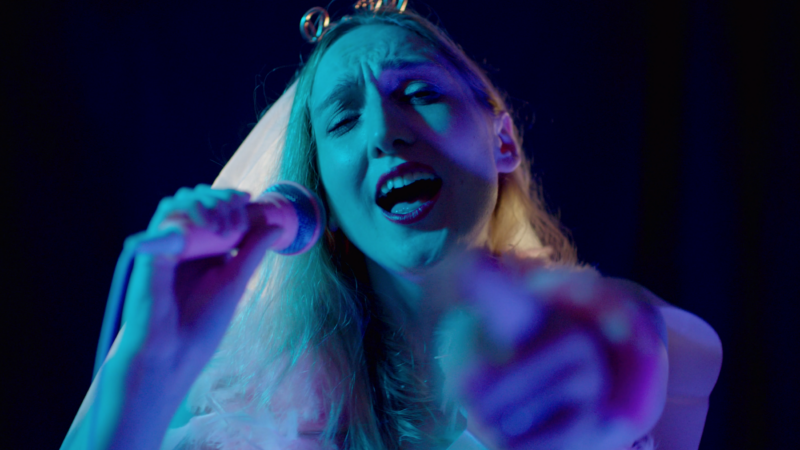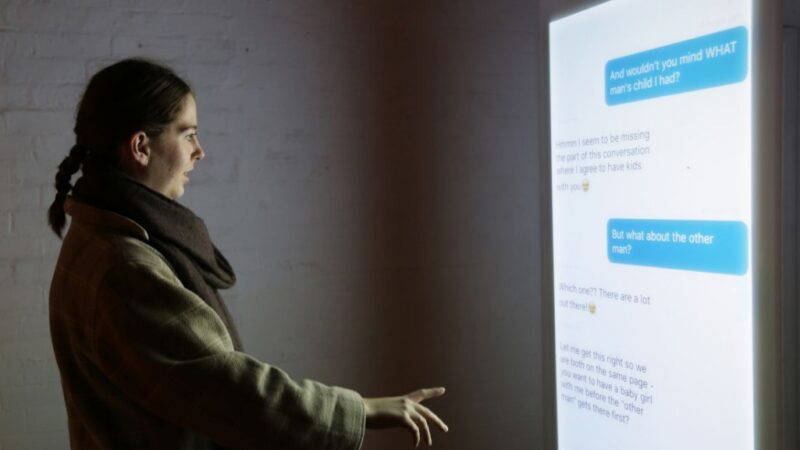A Little Space is the first collaboration between Mind the Gap and Gecko Theatre. Devised in conjunction with five performers with learning disabilities, the show draws its themes of connection, disconnection, loneliness and aloneness from the performers’ personal experiences.
When the show’s touring schedule was interrupted by Covid, Mind the Gap applied to The Space for assistance in creating a filmed version. The team wanted to create a digital version of the show for audiences who would not be able to attend tour venues due to physical and socio economic barriers. They also wanted to upskill staff and artists, enabling them to produce high quality films of productions.
Here, Deborah Dickinson, Senior Producer at Mind the Gap during this process, discusses A Little Space’s journey from live production to a widely-seen online video.
Origin stories
The project started by inviting Gecko Theatre, a physical theatre company, to work with us. The way Mind the Gap works is to do a couple of play days with a company we’re interested in, where we think there might be some common ground or something we can learn from one another. Then we did a series of residences where the Gecko team came to work with the 14 artists at Mind the Gap. This meant that, material was explored over a period of two years.
There was a true complicité between the work of Gecko and Mind the Gap. Mind the Gap built on the actors’ experiences and what they have to offer, then Gecko helped to shape that into something beautiful, telling the story in a very physical way but also bringing their high production values. We worked with the lights and the sound and the movement all together, with the sound and lighting designers in the room all of the time. It was a really beautiful and organic process, very much built on the skills of both companies. At one point we jokingly called ourselves Mind the Gecko.
Thinking about audiences, differently
We had developed the show and started touring it when Covid happened. Then I spotted the opportunity of The Space. The Space was something I always wanted to apply for as it really does offer the opportunity of learning. Working with The Space not only helped us to develop for the screen and the opportunity to broadcast to a wider audience but to really think about who that wider audience was.
I think the opportunity with Covid was reaching people who might not have access to a theatre for various reasons. One reason might be geographic, another might be mental health or learning disabilities. One of our target audiences was residential homes or community settings for people with learning disabilities where they could all watch it together and have a bit of a party by doing so. Applying to The Space made us think about audiences differently and how we could reach audiences we might not with a theatre tour.
Rob Abbey, Head of Communications at Mind the Gap, worked with The Space in terms of audience, thinking about who we could get to and creating a huge marketing and distribution plan, making sure we could reach as many people as we could. That was our objective: to make sure the show was seen by a lot of people.
We’re also able to show the film to people interested in booking the live production internationally. We have trailers, a behind the scenes video, and we created a whole story around the film on Facebook and YouTube. We were really hands-on with the behind the scenes, interviewing all of the creatives and the performers.

A creative hybrid
We didn’t have the budget to make a full feature film, but we also didn’t want this project to be just a recording. What we ended up with was a kind of creative output in itself, and it crossed between being not quite a film, not quite a theatre production in a positive way. You do get a different kind of story in the film because of the closeups.
For production, we were able to break the film up into four units of around 15 minutes and focused on those one at a time. We’d film each unit with three cameras, with sound or without sound, rather than go all the way through the whole show each time. This enabled the performers to really think about their performance in each of the units really closely.
The recommendation by The Space of Meerkat Films was really inspired as they worked really well with us as well as really hard. It took a while as we’re speaking different languages – the language of film is different from theatre – but there was such a willingness to make it work. We were supported hugely by The Space in developing that relationship.
Put the story in context
The Space were with us all the way through. the producers really cared about the project, a genuine care, interest and passion. At one point they even did a Zoom call with the actors, talking about acting for film and the different process that needs to theatre.
When it came to the finished product, The Space had some good ideas about how to provide context to the audience. At the beginning of the film there’s one line about people living in an apartment together. This was very much from one of The Space producer’s notes.
We had offered audiences to the live show pre-show notes… giving context about how the show had been put together and what we were trying to achieve, and reassuring the audience that there was no right or wrong way of interpreting the piece. Obviously, you don’t provide notes like this with a broadcast, so that one piece of context at the beginning gave a lot of information to the audience. It might feel small but I think it was really important… it told the audience ‘this is the world you are entering.’
Lessons learned
We learned from this how important it is to record material for the future. We learned about the possibility of making something new, a creative output that isn’t just filming a show that can be accessed by a wider audience. We learned about the whole process of telling a story on a small screen and thinking about how the acting changes and how the approach to telling the story changes. These were huge learning curves, but things that Mind the Gap can take forward to future projects. We even learned the importance of having someone to do makeup and hair. Having someone to do that on the film made a big difference.
This project gave an opportunity for the performers to see how it works making a film. They rose to the challenge in a way that’s remarkable, but they also enjoyed it, really loved it. The process of actual filmmaking was really enjoyable for everybody and we worked really hard. In the end, this was a true joint effort with a huge will to get it right from everybody. The Space wanted us to have the best possible result and we are all so proud of it.
How useful was this resource?




